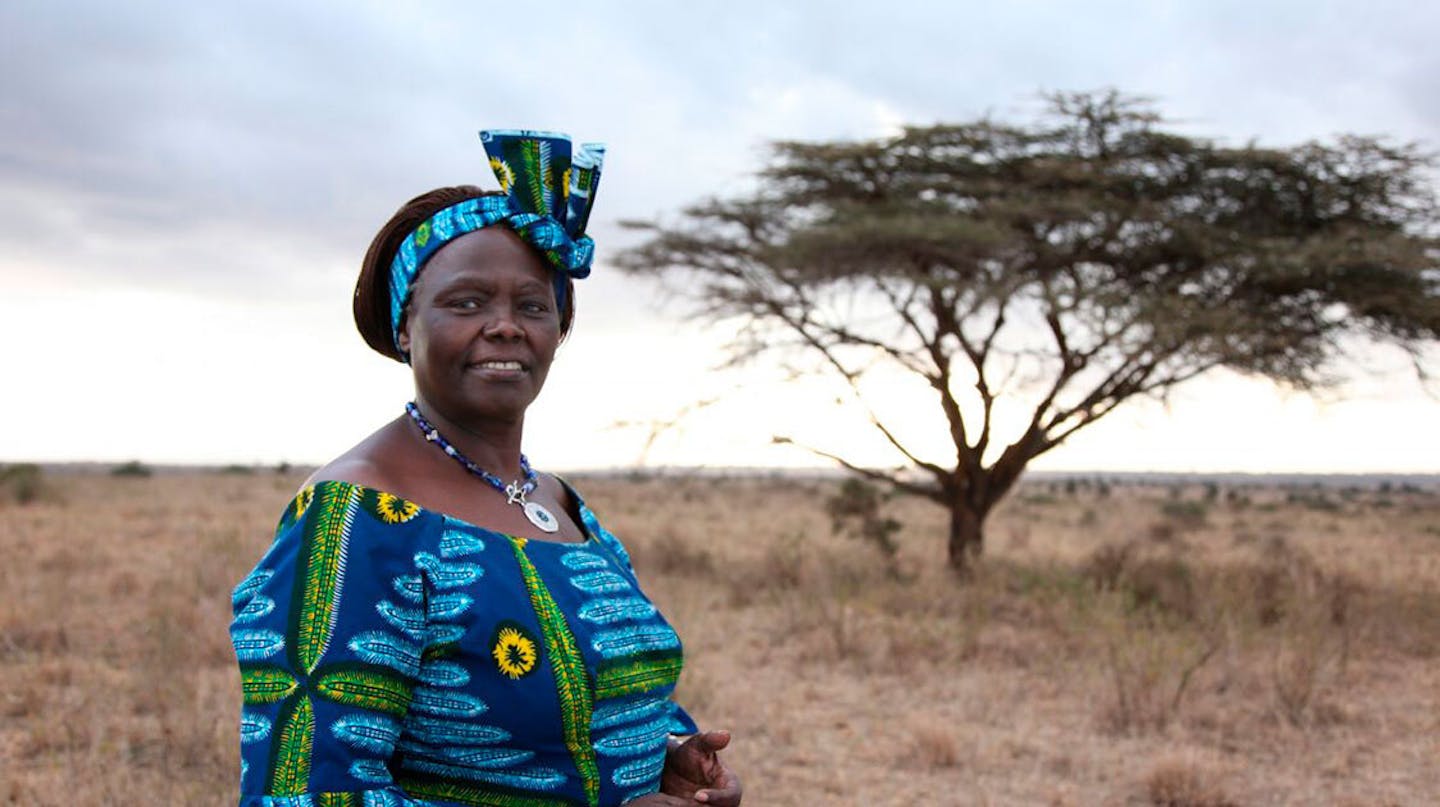The Urgent Realities of Climate Change: Facts and Solutions for a Sustainable Future
Our extensive fact-based study on how the realities of climate change require urgent climate action for a sustainable future

Climate change represents one of the most pressing challenges facing humanity today, with far-reaching impacts on both our environment and societies. As global temperatures rise, driven predominantly by human activities such as the burning of fossil fuels and deforestation, the urgency to understand and address this crisis has never been greater. This article delves into the fundamental aspects of climate change, including the key climatic factors, the significant rise in temperatures, and the various impacts this phenomenon has on our planet.
Featured: Upgrade Your Connectivity with Verizon - Exclusive Deals Inside!
Ready to experience unparalleled connectivity? With Verizon, you get lightning-fast speeds, reliable coverage, and the latest tech innovations.
Whether you’re streaming your favorite shows, working remotely, or staying connected with loved ones, Verizon has you covered. Don’t settle for less—upgrade to the best network in America today.
Join millions of satisfied customers who trust Verizon for their communication needs. Make the smart switch now and stay connected like never before!
Click below to discover exclusive deals and find the perfect plan tailored to your needs.
We may earn a commission when you make a purchase.
Understanding climate change requires an exploration of its underlying causes and the major international agreements aimed at combating it. This includes pivotal climate pacts such as the Kyoto Protocol and the Paris Agreement, which play crucial roles in setting global targets for reducing greenhouse gas emissions and fostering international cooperation. The article also highlights the crucial role of sustainable development in mitigating climate change and ensuring a resilient future for all.
As temperatures continue to rise, we are witnessing unprecedented environmental changes, from increased frequency of extreme weather events to rising sea levels and disrupted ecosystems. These changes have wide-ranging effects, impacting everything from agriculture and food security to human health and economic stability.

In addressing these challenges, both individuals and organizations have pivotal roles to play. From adopting sustainable practices in daily life to participating in global initiatives, collective action is essential for effective climate change mitigation. This article also discusses the involvement of key figures and organizations, such as the United Nations and NGOs like Greenpeace, in spearheading climate action and raising awareness.
Finally, the article explores innovative projects such as the Green Wall of Forest initiative across Northern Africa, which aims to combat desertification and enhance carbon sequestration. These efforts are integral to the broader fight against climate change, offering hope and tangible solutions for a more sustainable future.
I. Understanding Climate Classification and Its Impact on Global Climate Change
The Köppen climate classification system, developed in 1900 by the Russian-German scientist Wladimir Köppen, remains one of the most familiar systems used to categorize the world's climates. This system classifies climates based on temperature and precipitation, which are primary climatic factors. These elements are essential in defining different climates globally, influencing weather patterns, ecosystems, and human activities.
Primary Climatic Factors
Temperature: Temperature is a fundamental climatic factor, determining the heat energy available in a region. It influences weather patterns, vegetation, and wildlife. Temperature variations are significant across different latitudes and altitudes, shaping the climate zones of the Earth.
Precipitation: This includes all forms of water, such as rain, snow, sleet, and hail, that fall from the atmosphere to the Earth's surface. Precipitation is crucial in determining the moisture availability in an area, affecting ecosystems, agriculture, and human activities.
Wind: Wind is another primary climatic factor, affecting weather patterns, temperature distribution, and moisture transfer. It plays a significant role in the transfer of heat and moisture around the globe.
Solar Radiation: The amount of sunlight received influences temperature and weather patterns. Solar radiation varies with latitude, season, and time of day, impacting the energy balance of the Earth's surface.

Humidity: The amount of water vapor in the air affects precipitation, cloud formation, and temperature. Humidity levels are critical in determining the comfort and habitability of different regions.
Atmospheric Pressure: Atmospheric pressure influences wind patterns and weather systems. It affects the movement of air masses, leading to various weather conditions such as storms, cyclones, and anticyclones.
Key Figures in Climate Sustainability
The fight against climate change has seen the rise of numerous influential figures who have significantly contributed to climate sustainability through research, activism, policy, and innovation. Here are some key figures:
Greta Thunberg
A Swedish environmental activist, Greta Thunberg, gained international recognition for her powerful speeches and her "Fridays for Future" movement, where students worldwide skip school on Fridays to protest for climate action. Thunberg's straightforward and uncompromising approach has galvanized global youth and brought attention to the urgent need for climate action.
Al Gore
Former U.S. Vice President Al Gore has been a prominent climate activist for decades. His documentary "An Inconvenient Truth" and subsequent book highlighted the dangers of climate change and the need for immediate action. Gore's work has been instrumental in raising public awareness and advocating for renewable energy solutions.
"An Inconvenient Truth makes the compelling case that global warming is real, man-made, and its effects will be cataclysmic if we don’t act now".
[Source: AlGore.com]
Watch the Trailer for 'An Inconvenient Truth'
Wangari Maathai
Wangari Maathai, a Kenyan environmental and political activist, founded the Green Belt Movement, which focuses on tree planting, environmental conservation, and women's rights. She was awarded the Nobel Peace Prize in 2004 for her contributions to sustainable development, democracy, and peace.

James Hansen
An American climatologist, James Hansen, is known for his research on climate change and his early warnings about global warming. His testimony before the U.S. Congress in 1988 was a pivotal moment in bringing climate change to the forefront of scientific and public discourse.
Christiana Figueres
As the Executive Secretary of the UN Framework Convention on Climate Change (UNFCCC) from 2010 to 2016, Christiana Figueres played a crucial role in negotiating the Paris Agreement. Her leadership and diplomatic skills were key in bringing together countries to commit to reducing greenhouse gas emissions.
The Role of Organizations in Climate Sustainability
The United Nations (UN)
The UN plays a central role in coordinating international efforts to combat climate change. Key UN bodies and agreements include:
UN Framework Convention on Climate Change (UNFCCC)
Established to address climate change, the UNFCCC facilitates international negotiations and agreements, such as the Kyoto Protocol and the Paris Agreement, which aim to reduce global greenhouse gas emissions.
Intergovernmental Panel on Climate Change (IPCC)
The IPCC assesses scientific information related to climate change, providing comprehensive reports that inform global policy and decision-making.
United Nations Environment Programme (UNEP)
UNEP promotes environmental sustainability through research, advocacy, and partnerships, addressing issues such as biodiversity, pollution, and climate change.
Non-Governmental Organizations (NGOs)
Greenpeace
Known for its direct action and advocacy, Greenpeace campaigns on various environmental issues, including climate change, deforestation, and ocean protection. Greenpeace's efforts to expose environmental injustices and lobby for policy changes have had a significant impact on public awareness and government action.

World Wildlife Fund (WWF)
WWF focuses on conservation and environmental sustainability, working on issues like wildlife protection, forest conservation, and climate change. WWF's Climate Savers program partners with businesses to reduce their carbon footprint and promote sustainable practices.
The Sierra Club
One of the oldest environmental organizations in the U.S., the Sierra Club advocates for clean energy, conservation, and climate action. Their campaigns and grassroots activism have been instrumental in pushing for environmental policies and protecting natural landscapes.
Friends of the Earth
This global network of environmental organizations works to promote sustainable development and environmental justice. Friends of the Earth campaigns on issues such as climate change, biodiversity, and corporate accountability.
The Role of Organizations in Climate Action
Policy Advocacy: Both UN bodies and NGOs advocate for stronger climate policies at national and international levels. They work to influence legislation, promote renewable energy, and push for reductions in greenhouse gas emissions.
Research and Education: Organizations like the IPCC and WWF conduct research to better understand climate change and its impacts. They also educate the public and policymakers on the importance of sustainability and the urgent need for climate action.
Grassroots Mobilization: NGOs like Greenpeace and the Sierra Club mobilize communities and individuals to take action on climate change. Through campaigns, protests, and community organizing, they raise awareness and drive collective action.
Funding and Support: The UN and NGOs provide funding and technical support for climate adaptation and mitigation projects, particularly in developing countries. This includes renewable energy initiatives, conservation programs, and sustainable agriculture projects.
Key figures in climate sustainability have played vital roles in raising awareness, conducting research, and advocating for policy changes. Organizations such as the UN and NGOs like Greenpeace are crucial in coordinating global efforts, advocating for stronger policies, and mobilizing communities to take action. Together, these individuals and organizations drive the collective effort needed to combat climate change and promote a sustainable future.
II. Facts and Solutions for a Sustainable Future: Tying the Effects with Mitigations for Climate Change
Rising Global Temperatures and Their Effects
The Earth's average temperature has risen significantly over the past century, primarily due to human activities such as burning fossil fuels, deforestation, and industrial processes. This increase in temperature, known as global warming, has far-reaching effects on the environment, ecosystems, and human societies.
Melting Glaciers and Rising Sea Levels: One of the most visible impacts of rising temperatures is the melting of glaciers and polar ice caps. This contributes to rising sea levels, which threaten coastal communities and ecosystems. Low-lying areas are particularly vulnerable to flooding and erosion.
Extreme Weather Events: Higher temperatures lead to more frequent and intense extreme weather events, such as heatwaves, hurricanes, droughts, and heavy rainfall. These events can cause significant damage to infrastructure, agriculture, and human health.
Ecosystem Disruption: Climate change affects ecosystems by altering habitats, food availability, and species distribution. Many species are forced to migrate or adapt to changing conditions, leading to shifts in biodiversity. Some species may face extinction if they cannot adapt quickly enough.
Impact on Agriculture: Changes in temperature and precipitation patterns can affect crop yields and food production. Some regions may experience increased productivity, while others may face declines due to droughts, heat stress, and changing growing seasons.
Human Health: Rising temperatures can exacerbate health issues such as heat-related illnesses, respiratory problems, and the spread of vector-borne diseases. Vulnerable populations, including the elderly, children, and low-income communities, are at higher risk.
Climate Change Mitigation and Adaptation Strategies
To address the challenges of climate change, both mitigation and adaptation strategies are essential. Mitigation focuses on reducing greenhouse gas emissions to slow down global warming, while adaptation aims to minimize the impacts of climate change on societies and ecosystems.
Mitigation Strategies:
- Reducing Greenhouse Gas Emissions: This involves transitioning to renewable energy sources, improving energy efficiency, and adopting low-carbon technologies. Replacing fossil fuels with solar, wind, hydro, and geothermal energy is crucial in reducing emissions.
- Carbon Capture and Storage (CCS): CCS technology captures carbon dioxide emissions from industrial processes and power plants and stores them underground to prevent them from entering the atmosphere.
- Protecting and Enhancing Carbon Sinks: Forests, wetlands, and oceans act as carbon sinks, absorbing carbon dioxide from the atmosphere. Protecting these ecosystems and enhancing their capacity to sequester carbon is vital in mitigating climate change.

Adaptation Strategies:
- Building Resilient Infrastructure: Developing infrastructure that can withstand extreme weather events and rising sea levels is essential in reducing vulnerability to climate change impacts. This includes building flood-resistant homes, improving drainage systems, and reinforcing coastal defenses.
- Sustainable Agriculture Practices: Implementing drought-resistant crops, efficient water management, and soil conservation techniques can help farmers adapt to changing climate conditions. Diversifying crops and adopting agroforestry practices can also enhance resilience.
- Community-Based Adaptation: Engaging local communities in climate adaptation efforts ensures that strategies are tailored to specific needs and conditions. This includes raising awareness, providing education, and involving communities in decision-making processes.
The Role of Indigenous Knowledge
Indigenous knowledge and skills play a crucial role in climate change adaptation and mitigation. Indigenous communities have developed sustainable practices over centuries, which can offer valuable insights into managing natural resources and adapting to environmental changes.
Traditional Agricultural Practices: Indigenous farmers often use traditional agricultural techniques that are well-suited to local environmental conditions. These practices, such as crop rotation, polyculture, and agroforestry, enhance soil fertility, conserve water, and improve resilience to climate variability.
Natural Resource Management: Indigenous communities have a deep understanding of local ecosystems and biodiversity. Their knowledge of sustainable hunting, fishing, and gathering practices contributes to the conservation of natural resources and the protection of carbon sinks.
Cultural and Spiritual Values: Indigenous cultures often emphasize the interconnectedness of humans and nature. This holistic worldview promotes sustainable living and stewardship of the environment, aligning with the principles of sustainable development.
Education and Capacity Building
Education is fundamental in addressing climate change and promoting sustainable development. It empowers individuals and communities with the knowledge, skills, and values needed to take action and build resilience to climate impacts.
Climate Change Education: Integrating climate change education into school curricula and public awareness campaigns is essential in raising awareness and fostering a culture of sustainability. Education can help individuals understand the science of climate change, its impacts, and the solutions available.
Skills Development: Developing green skills, such as renewable energy technologies, sustainable agriculture practices, and environmental management, is critical in creating a workforce capable of addressing climate challenges. Vocational training and higher education programs should prioritize these skills.
Community Engagement: Engaging communities in climate action initiatives ensures that local knowledge and perspectives are incorporated into decision-making processes. Community-based education and participatory approaches enhance the effectiveness of adaptation and mitigation efforts.

The Role of Policy and Governance
Importance of Policy and Governance: Effective policies and governance structures are critical in addressing climate change. Governments at all levels play a crucial role in creating and enforcing regulations that reduce greenhouse gas emissions, protect natural resources, and promote sustainable development.
International Cooperation: Climate change is a global issue that requires international cooperation. Agreements like the Paris Agreement highlight the need for countries to work together to set targets, share technology, and provide financial support to developing nations. This cooperation is essential in achieving significant reductions in global emissions.
National and Local Policies: National governments can implement policies such as carbon pricing, renewable energy incentives, and emission reduction targets. Local governments can also play a vital role by implementing climate action plans, promoting sustainable urban development, and encouraging community-based initiatives.






